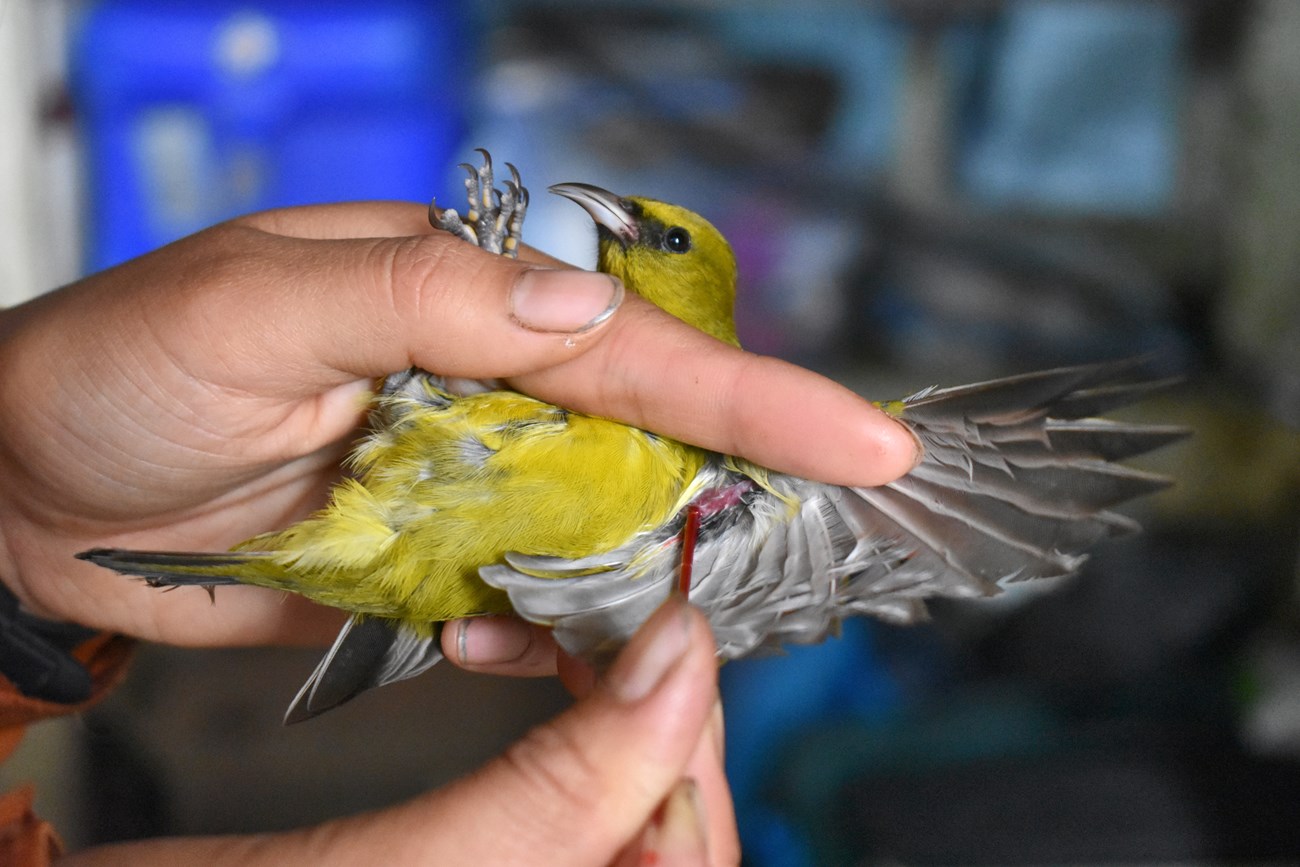Last updated: March 11, 2021
Article
Tracking the Spread of Avian Malaria within Haleakalā National Park

NPS
Scientists with the National Park Service Pacific Island Inventory & Monitoring Network (PACN) and US Geological Survey (USGS) Pacific Island Ecosystems Research Center recently teamed up to answer a pressing question: how prevalent is avian malaria in Haleakalā National Park? USGS scientists had tackled the question once before in 2002. But this time, they suspected they might find very different answers.
Avian malaria has devastated populations of Hawaiian honeycreepers. The malaria parasite is passed to birds through the bite of non-native mosquitoes, where it can multiply in the blood and organs, causing severe anemia. Hawaiian honeycreepers evolved on the isolated islands and lacked the immunological defenses to fight the novel disease. Many species suffered mortality greater than 90% and more than two-thirds of Hawaiian honeycreepers have gone extinct as a result.
At first, the devastation was mainly confined to lower elevations. Mosquitoes couldn’t survive to transmit the disease higher up due to the cooler temperatures, allowing the honeycreepers a refuge. The 2002 USGS study in Haleakala’s Kīpahulu Valley confirmed this, and even found the area to be in better shape at lower elevations than sites elsewhere in Hawai’i at the time. The scientists found avian malaria in less than 4% of mosquitoes, and only at sites below 900 meters above sea level.
But the results of a 2017 landbird monitoring effort by PACN and partners* across East Maui left scientists suspecting that conditions had changed. Populations of all three honeycreepers endemic to Maui had shrunk by more than half since their full ranges were last surveyed at once in 1980. The kiwikiu (Maui parrotbill) and ʻākohekohe (crested honeycreeper), both critically endangered, were no longer found in lower elevation portions of their ranges. Most concerning of all, scientists estimated the entire population of kiwikiu to stand at fewer than 200 birds. Was it possible that avian malaria was behind such dramatic declines and range contractions?
While introduced pests still degrade honeycreeper habitat (e.g., feral pigs) and prey on honeycreepers and/or their eggs (e.g., rats, cats, mongooses), avian malaria is widely recognized as the most pressing threat. The reason? Human-caused climate change. As average global temperatures rise, mosquitoes carrying avian malaria can survive at the higher elevations where honeycreepers once found refuge. The NPS and USGS team hypothesized that the prevalence of avian malaria in birds and mosquitoes had increased in Kīpahulu Valley and might confirm the corresponding declines of honeycreepers.
They were not wrong. The team set up mosquito traps at many of the same sites surveyed in 2002, and at higher elevation sites up to 1,950 m. This time, they found mosquitoes, including mosquitoes carrying avian malaria, as high as 1,430 m. Only the highest survey site remained mosquito-free. Mosquito infection rates were also considerably higher than in 2002, ranging from 7% to 50% at lower elevations, and reaching 44% at 1,430 m.
These findings suggest that higher average global temperatures may indeed have increased the elevational range of cold-intolerant mosquitoes. In other words, a combination of climate change and avian malaria likely led the kiwikiu and ākohekohe to the brink of extinction.
With so few honeycreepers remaining, NPS and its partners on Maui have moved quickly to take action. A new project is already in the works to manage East Maui’s mosquito population.
*Maui Forest Bird Recovery Project, Pacific Cooperative Studies Unit, State of Hawai‘i Division of Forestry and Wildlife, and the US Geological Survey, along with several others
For more information
- Judge, S. W., R. J. Camp, C. C. Warren, L. K. Berthold, H. L. Mounce, P. J. Hart, and R. J. Monello. 2019. Pacific island landbird monitoring annual report, Haleakalā National Park and East Maui Island, 2017. Natural Resource Report NPS/PACN/NRR—2019/1949. National Park Service, Fort Collins, Colorado.
- Haleakalā National Park: Saving our Forest Birds
